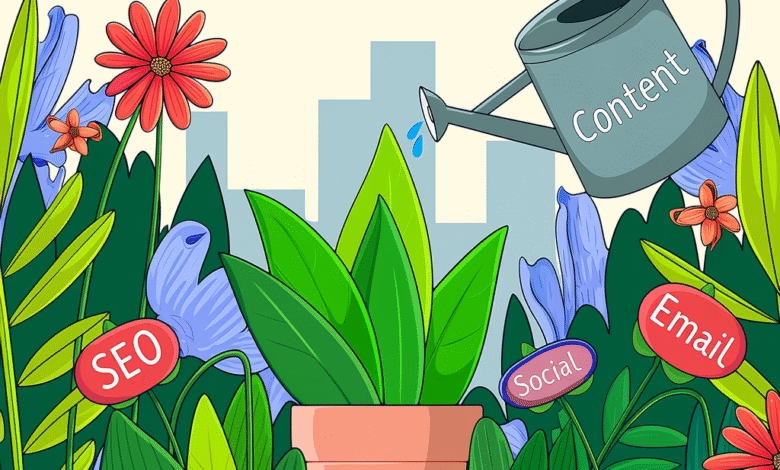
Core Components of Inbound Marketing
Inbound marketing consists of several core components that work together to create an effective and cohesive strategy. These components are essential in attracting, engaging, and delighting customers.
Content Marketing
1. Definition and Importance:
- Content marketing involves creating and sharing valuable, relevant, and consistent content to attract and retain a clearly defined audience. It’s pivotal in inbound marketing as it establishes authority, builds trust, and nurtures relationships with potential and existing customers.
2. Types of Content:
- Blog Posts: Provide educational and engaging content that addresses the interests and challenges of your target audience.
- eBooks and Whitepapers: Offer in-depth information on topics relevant to your audience, typically used in the convert stage to gather leads.
- Infographics and Videos: Use visual content to explain complex topics in an engaging way.
Content Strategy:
- Developing a content strategy involves understanding your audience, planning topics that resonate with them, and scheduling consistent publication.
SEO (Search Engine Optimization)
1. Keyword Research:
- Identifying the right keywords that your target audience uses in search queries is crucial for SEO. These keywords should guide your content creation.
2. On-Page SEO:
- This involves optimizing individual web pages (content and HTML source code) to rank higher in search engines. It includes using keywords in titles, meta descriptions, and throughout the content.
3. Link Building:
- Acquiring high-quality inbound links from other websites enhances your site’s authority and improves search engine rankings.
Social Media Marketing
1. Platform-Specific Strategies:
- Understanding the nuances of each social media platform allows you to tailor your content and engagement strategy effectively.
2. Engagement:
- Regularly interacting with followers, responding to comments, and participating in conversations builds community and relationships.
Email Marketing
1. List Building:
- Creating a subscriber list of people who opt-in to receive communications from your business.
2. Segmentation:
- Dividing your email list into smaller segments based on criteria like behavior, demographics, or engagement level, allows for more targeted and relevant email campaigns.
3. Campaigns:
- Sending out emails that are tailored to the interests and needs of your audience segments, keeping them engaged and moving them through the sales funnel.
These components are interdependent, with each playing a crucial role in the success of an inbound marketing strategy. Content marketing provides the substance that attracts and engages users, SEO makes it easier for people to find that content, social media marketing allows for broader distribution and engagement, and email marketing nurtures leads towards conversion. Together, these elements form a comprehensive approach to marketing that aligns with modern consumer behaviors and preferences.
Inbound Marketing Unveiled: Index
1. Introduction to Inbound Marketing
2. The Inbound Marketing Methodology
3. Core Components of Inbound Marketing
4. Tools and Technologies
5. Strategies and Best Practices
6. Challenges and Solutions in Inbound Marketing
7. Measuring Success and ROI
8. Case Studies and Real-World Examples
9. The Future of Inbound Marketing
10. Conclusion